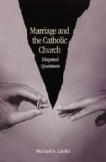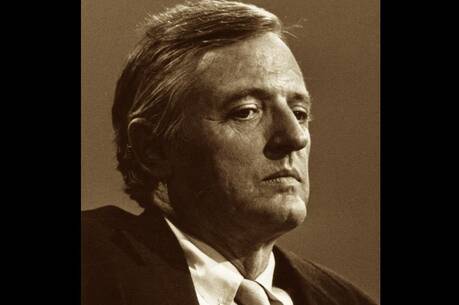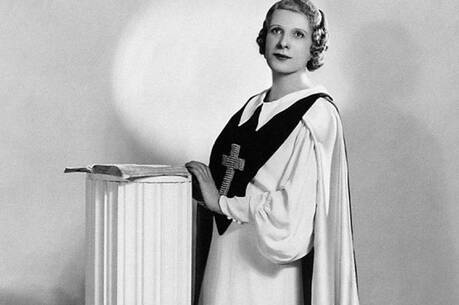Husband, Wife, Christ
Michael Lawler is the director of the Center for Marriage and Family at Creighton University in Omaha, Neb., and for the past 30 years has taught courses on marriage to Catholic students. His publications on marriage and family span decades, and include several books on marriage, all informed by a clear pastoral and practical interest. A continuing theme in his work is the sacramentality of marriage. That is to say that [marriage] reveals simultaneously the intimate union of a man and a woman and the intimate union of Christ and Christ’s Church. While affirming this very Catholic idea, Lawler has also criticized narrow conceptions of sacramentality that stress marriage as contract or indissolubility to the extent that they ignore or undermine the nature of Christian marriage as an ongoing and ever-changing relationship. This book is no exception to the general trend of Lawler’s scholarship. Here he takes aim at rigid or punitive norms against divorce that do not correspond to the experience of married couples, the nature of faith itself or even past traditions and teachings of the church.
Of the book’s nine chapters, the first five are essentially on different approaches to marriage as sacrament. The governing agenda is to show how divorce and remarriage can be justified historically, canonically and theologically. Lawler argues that the sacramental character of marriage depends on personal faith. Therefore (contrary to canon law and current official teaching), sacramentality cannot attend the union of two persons, even two baptized persons, who do not intend, or who cease to experience, a mutual love that in faith makes God and Christ present. In a chapter on divorce and remarriage, Lawler argues that there are actually several New Testament teachings about divorce; that the church has always allowed dissolution even of valid marriages under certain conditions; and that it is impossible even to know when the criterion of consummation, necessary to indissolubility, has been met. On the basis of this and other evidence, according to Lawler, many more valid marriages than heretofore ever imagined are...now open to dissolution in the Church.
Lawler’s treatment of ecclesiastical law and current policies regarding marriage is erudite and well reasoned. I trust his conclusions will move experts closer to the time when the pain suffered by Catholics excluded from the sacraments due to irregular marriage situations can be alleviated by their full inclusion in the church. Yet I question whether the agenda to relax ecclesiastical constraints on marriage and divorce should still be so central to Catholic examinations of the disputed aspects of marriage as may have been necessary three or four decades ago.
In generations past, restrictive Catholic norms reflected and reinforced cultural norms that made the lives of divorced people shameful and miserable. This is not the case in 2002. While some marriages are destructive and should be ended, especially in cases of domestic abuse, most younger Catholics beginning marriage and a family need encouragement to make and work on lasting commitments in a culture of transiency and individualism.
Lawler begins and ends his book with a barrage of statistics about the decline of permanent marriage, the rise of divorce and single parenthood and the resulting high incidences of childhood poverty and lack of paternal involvement. He also refers to several recent studies that show that Catholics divorce in about the same proportions as other Americans, and that a majority of Catholics believe they do not need to have their marriages approved by the church or to obey church teaching on marriage and divorce. According to Lawler, his book is meant as a Catholic response to the crisis. An extended critique of the Catholic view of permanence in marriage is not the best way to address this particular need.
Much the same could be said of the chapter on cohabitation before marriage. Lawler proposes a formal betrothal ceremony to recognize and legitimize this state and to provide an opportunity for marriage preparation. He is right that there are crosscultural, biblical and historical precedents for a recognized time of sexual access prior to formal marriage. In biblical times and in other cultures today (for instance, in Africa), betrothal is connected to familial, civic and legal responsibilities and to socially sanctioned norms for providing for children. These are missing in our individualistic and sexually permissive culture. I agree that it is not helpful to take a condemnatory attitude toward couples who are living together or to refuse them the sacraments or a church wedding. Yet if Christians are to go so far as to ratify a culturally prevalent practice that has been shown to decrease rather than increase marital stability, they should do so only on very strong evidence that the effects on responsibility for pregnancy and on future marital commitment will be positive.
Lawler includes three chapters in the second half of his book that I would like to see developed into a constructive, fundamental statement about marriage, one that could evangelize the divorce culture he so deplores. These chapters concern interchurch marriage, friendship and family. The first notes that Christians from different religious backgrounds divorce at an even higher rate than couples who belong to the same church. Lawler then develops baptism as the foundation of unity. His chapter on friendship uses philosophical and theological models to speak to the existential conditions that make marriages work and last, including the need to exercise faithfulness, mutual criticism, honesty and patience. In treating family, he begins by noting the many adverse effects of divorce on women and children (divorce is almost as sexist an institution as traditional patriarchal marriage), then connects marriage and family to the necessary social supports and social responsibilities that constitute justice in, for and by families.
Christian Marriage: Disputed Questions will be informative and thought-provoking for those interested in the fine points of sacramental and canonical tradition. The book also points the way to the kind of creative new thinking about marriage that will be necessary to attract young couples to Catholic theology and practice. Perhaps in his next work, Lawler will move his insights even further along the road to a creative new approach to marital commitment and fidelity.
This article also appeared in print, under the headline “Husband, Wife, Christ,” in the November 18, 2002, issue.








